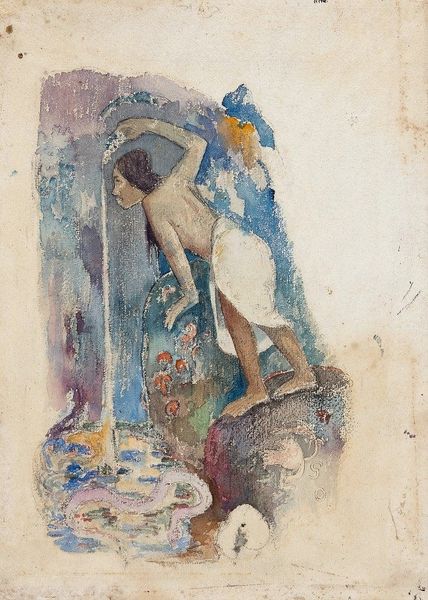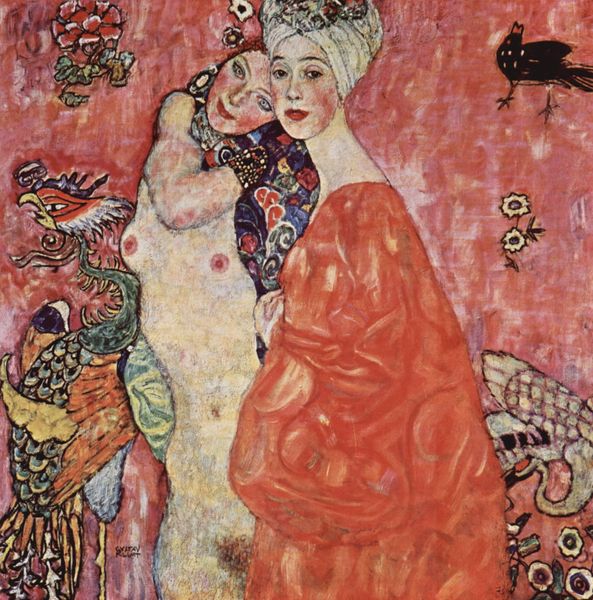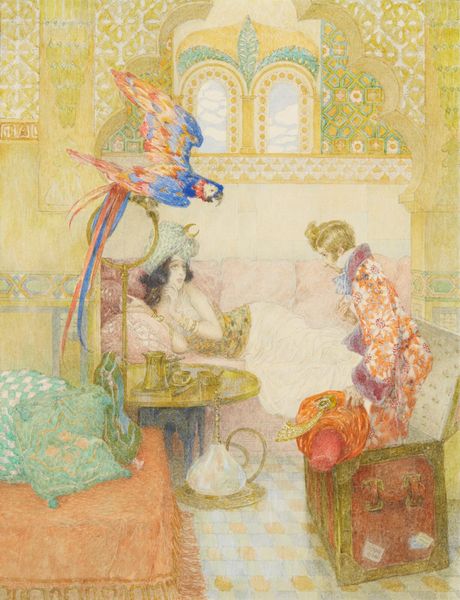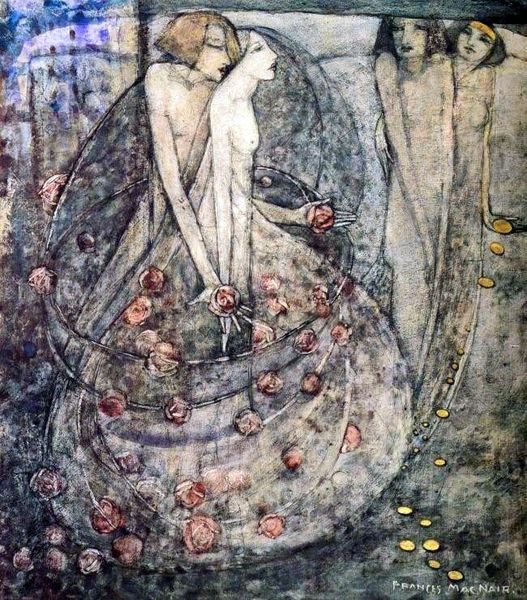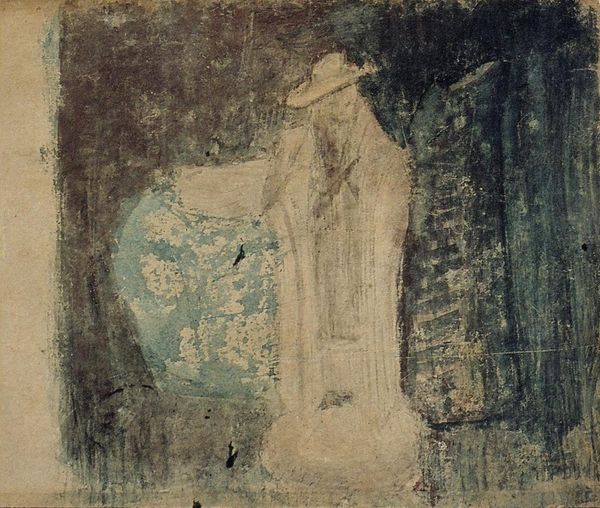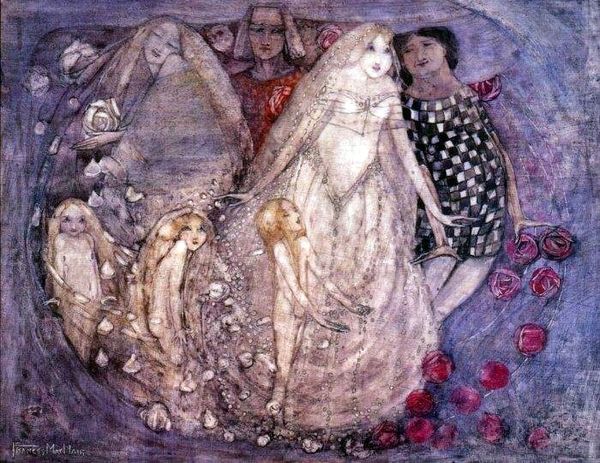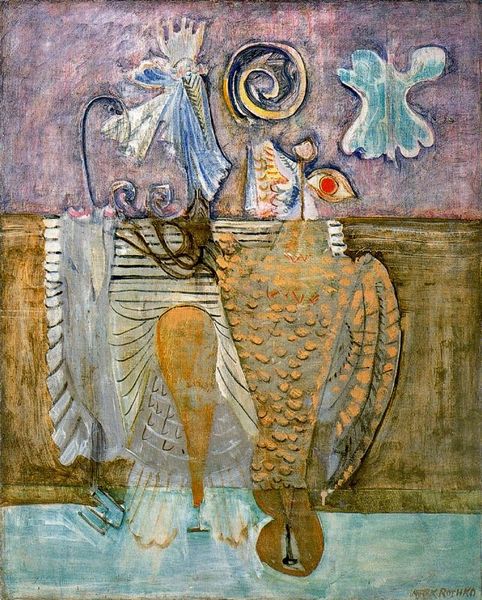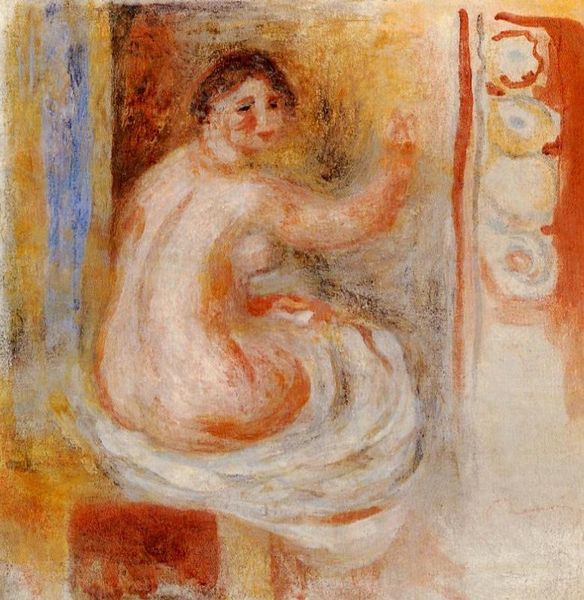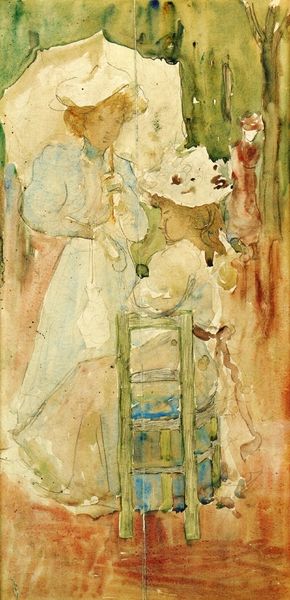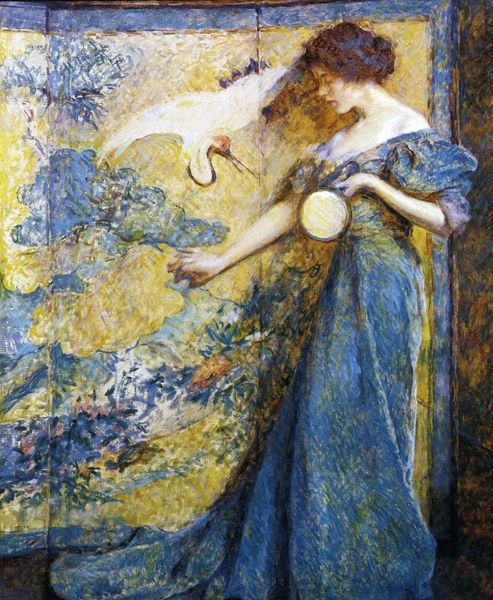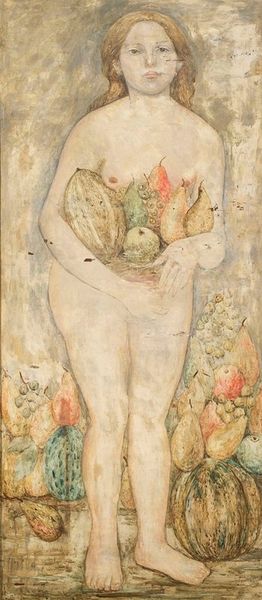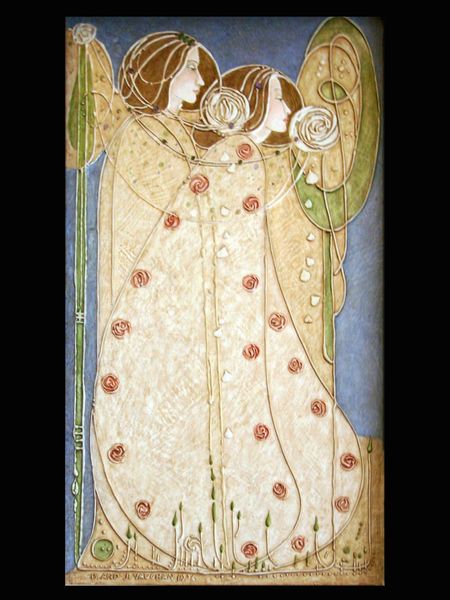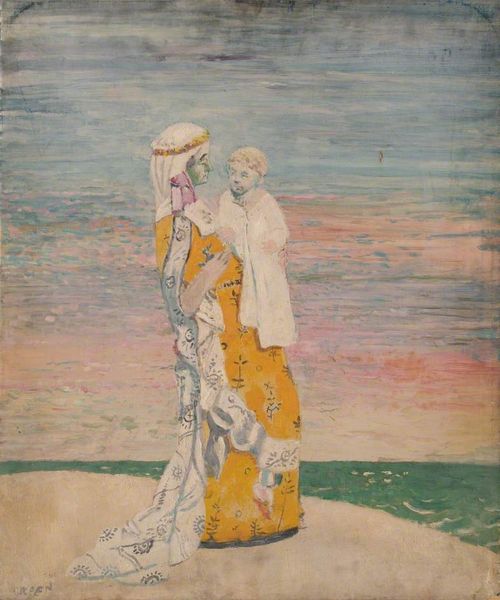
textile
#
abstract painting
#
textile
#
possibly oil pastel
#
text
#
handmade artwork painting
#
oil painting
#
acrylic on canvas
#
underpainting
#
painting painterly
#
watercolour bleed
#
watercolour illustration
#
watercolor
Dimensions: 31.43 x 23.81 cm
Copyright: Public domain
Curator: Welcome. We are looking at "Circus Band," created around 1895 by Maurice Prendergast. It resides in a private collection. Editor: Immediately, I see an intimate, somewhat hazy depiction, like a half-remembered dream of a performance. The subdued palette, primarily pinks and yellows, contributes to this gentle feeling. Curator: Yes, the handling of the materials is fascinating. Though labels mention oil paint and pastel, some describe it as being on textile, even with watercolor bleeding apparent. I'm wondering about the underpainting, too – it is a painting exploring its own means of production, you might say! What was Prendergast aiming at here by using perhaps unconventional support for the painting, which also looks intentionally like handmade art? Editor: Well, the circus has always been a potent symbol. Clowns, for instance, act as tricksters or wise fools. A performer might seem free but could be tethered to expectation. What appears like joyful chaos on the surface could also hide societal pressures, a point the pink palette enhances because it almost acts as rouge for an unreal setting. Curator: That idea about society is relevant in other ways too! Who made the instruments these figures use, the paper their costumes were built of and who are the laborers who support that textile construction? What societal status and place does a circus inhabit at the time, and how does Prendergast reflect or otherwise deny or confirm those conventions? Editor: The visual rhythms lead your eye in circles – the curves of the drum mirroring the dancer’s tutu, and the repeated circles and spots on the figures' bodies, that hint at lights. But are these characters repeating the same rhythms of work every day in a way we do not get to witness behind the painting's set pieces? And is that then why Prendergast chose them, since they'd naturally suggest cycles and expectations as circus members? Curator: I am very curious to discover more about this textile's support structure too because that, to me, says everything about Prendergast's focus and perspective here: the canvas, its origin and even if we consider that "circus" has been with us, across classes, for quite a long time. That too indicates societal trends here! Editor: A world of fleeting entertainment captured, not in its boisterous climax, but in a moment of reflective quiet before the show. It seems this piece can show us things about our cultural memories of performance, how we engage in spectacle, as well as the echoes left behind, in visual terms!
Comments
No comments
Be the first to comment and join the conversation on the ultimate creative platform.

